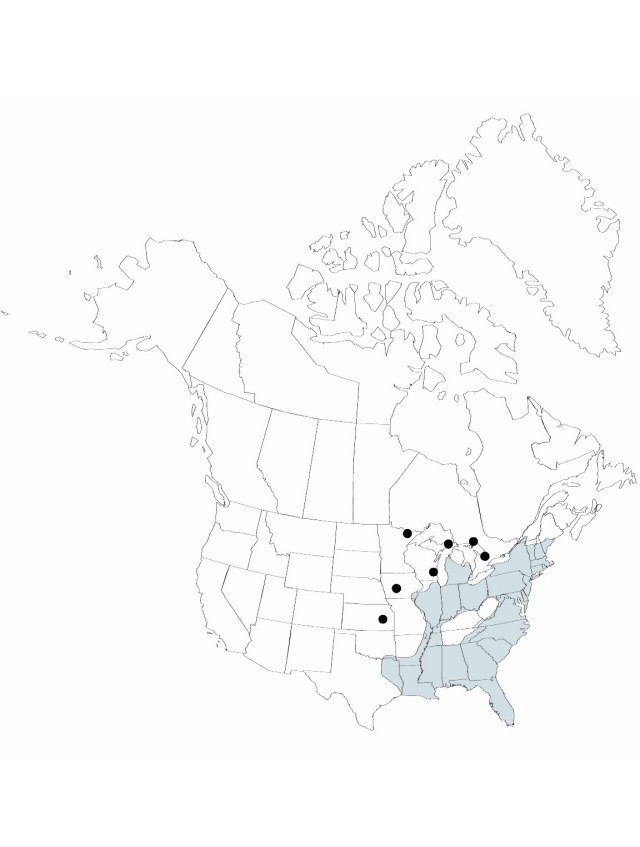Peltandra virginica
in H. W. Schott and S. L. Endlicher,Meletemata Botanica 19. 1832.
Leaves: petiole green to purple-green, 38–98 cm; blade medium green, not glaucous or slightly glaucous abaxially, 9–57 × (2.5–) 5–15 (–31) cm, larger on average and more variable in shape than in Peltandra sagittifolia; lateral-veins of 2 thicknesses. Inflorescences 7–25 cm; peduncle 20–56 cm; spathe tube green outside, paler green within, closed; 1.5–3.5 (–5.2) × 0.7–1.9 cm; spathe blade green to green with white or yellow-green along margins, loosening only to slightly open to fully open at anthesis, (5.9–) 8.5–21.4 × 0.5–2.3 cm, margins undulate; spadix tapering apically, more than 1/2 to almost as long as spathe. Flowers: pistillate flowers pale green to greenish white, ovaries 1-locular; ovules 1–4; staminate portion of spadix white, cream white, or pale-yellow; sterile flowers between pistillate and staminate flowers; sterile tip 0.5–2 cm. Infructescences enclosed by spathe tube, rotting away to release fruits. Fruits pea green to mottled green or very dark purple-green, 10–18 × 6–16 mm. Seeds 1–2 (–4), embedded in mucilage, 8–17 mm. 2n = 112.
Phenology: Flowering spring–late summer, also fall and winter in the extreme southern areas of its range.
Habitat: Wetland habitats, including bogs, swamps, freshwater to low-salinity tidal marshes, and ditches, as well as along the edges of ponds, lakes, and rivers
Elevation: 0–1200 m
Distribution

Ont., Que., Ala., Ark., Conn., Del., D.C., Fla., Ga., Ill., Ind., Iowa, Kans., Ky., La., Maine, Md., Mass., Mich., Minn., Miss., Mo., N.H., N.J., N.Y., N.C., Ohio, Okla., Pa., R.I., S.C., Tenn., Tex., Vt., Va., W.Va., Wis.
Discussion
Leaf shape is highly variable in Peltandra virginica, and different forms have been recognized taxonomically, both at the specific and infraspecific levels. Since Because leaf shape varies within populations and even within an individual clump of plants, P. virginica is treated here as a single taxon.
Populations of Peltandra virginica are most common along the Atlantic Coastal Plain, but its range appears to be actively expanding. Since 1978, the species was reported as new to the floras of Iowa, Kansas, Minnesota, West Virginia, and Wisconsin, and introduced populations may persist in Oregon and California. Fruits and seeds of P. virginica are a food for wildlife, especially waterfowl, and their use by migratory birds is an important factor in the spread of this species.
The flowers of Peltandra virginica are pollinated by a chloropid fly, Elachiptera formosa (Diptera: Chloropidae), which uses the inflorescence as a mating site and a larval food source. Eggs are deposited within the inflorescence, and the emerging larvae feed on the rotting male portion of the spadix. The fruits are primarily dispersed by water, although animals also play a role.
Peltandra virginica may have been an important food plant for eastern Native Americans, especially in the mid-Atlantic coastal region from Pennsylvania to Virginia, where the plants are now common and grow in large, dense populations. Historical accounts mention use of the rhizomes as well as the leaves, fruits, and seeds as food.
Selected References
None.